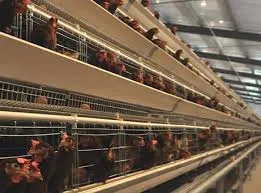Efficient Hammer Mill Feed Grinder for Optimal Livestock and Poultry Nutrition Solutions
Dec . 15, 2024 09:07 Back to list
Efficient Hammer Mill Feed Grinder for Optimal Livestock and Poultry Nutrition Solutions
The Hammer Mill Feed Grinder An Essential Tool for Livestock Farming
In the world of agriculture, particularly livestock farming, the efficiency and quality of animal feed play a crucial role in overall productivity. One of the most vital tools in this process is the hammer mill feed grinder. Designed to crush, grind, and pulverize various feed ingredients, the hammer mill has carved a niche for itself in the feed production industry, enhancing the quality and efficiency of feed processing.
Understanding Hammer Mills
A hammer mill is a type of feed grinder that utilizes a series of rotating hammers to break down bulk material into smaller particles. The innovative design includes a feeding device that seamlessly feeds the material into the chamber, where high-speed hammers rapidly strike the feed. This action reduces the size of the ingredients, making them easier for livestock to digest.
Typically constructed from durable materials like stainless steel, hammer mills are built to withstand the rigors of daily use in agricultural settings. They come in various sizes and configurations, catering to the needs of both small farms and large-scale feed productions.
Benefits of Using Hammer Mills for Feed Grinding
1. Improved Feed Efficiency The uniform particle size produced by hammer mills ensures that livestock can digest feed more effectively. This improved digestibility translates to better nutrient absorption, leading to healthier animals and increased productivity.
2. Versatile Processing Hammer mills can handle a wide variety of feed materials, including grains, legumes, and fibrous plants. This versatility allows farmers to create customized feed mixtures to meet the specific nutritional needs of their livestock.
3. Cost-Effectiveness By grinding feed ingredients on-site, farmers can save significant costs associated with purchasing pre-made feed. This also allows for better control over feed quality and composition, enabling farmers to use locally sourced ingredients.
4. Easy Maintenance Hammer mills are generally easy to maintain, with many models featuring replaceable wear parts. Regular maintenance ensures that the machine operates efficiently, reducing downtime and increasing productivity.
hammer mill feed grinder

5. Increasing Feed Production Capacity With the ability to process large quantities of feed quickly, hammer mills increase the overall feed production capacity of a farm. This efficiency is particularly beneficial during peak feeding times or when preparing for increased livestock demand.
Choosing the Right Hammer Mill
When selecting a hammer mill for feed grinding, several factors should be considered to ensure optimal performance. The size of the operation, the types of feed ingredients used, and the required particle size must all play a role in the decision-making process.
1. Scale of Operation Small farms may only require a smaller, more affordable hammer mill, while larger operations might benefit from industrial-sized machines capable of processing massive amounts of feed quickly.
2. Material Characteristics Different feed materials may require adjustments in the hammer mill setup to achieve desired results. Understanding the physical characteristics of the feed being used can help in selecting the right model.
3. Motor Power and Speed The engine power impacts the efficiency and speed of the grinding process. A more powerful motor allows for faster processing, which is ideal for larger operations.
4. Maintenance Requirements Choose a hammer mill that is easy to clean and maintain. Features like access doors and removable screens simplify cleaning and part replacement, ensuring that production never stalls for long.
Conclusion
The hammer mill feed grinder is an indispensable asset for modern livestock farming. Its ability to efficiently reduce feed particle size enhances feed quality and animal health, ultimately boosting productivity. As agriculture continues to evolve, investing in reliable and efficient feed processing equipment like hammer mills will remain crucial for success in the livestock industry. By understanding their benefits and carefully selecting the right model, farmers can ensure their operations run smoothly, feeding their livestock optimally and supporting sustainable farming practices.
-
Automatic Feeding Line System-Pan Feeder Nipple Drinker|Anping County Yize Metal Products Co., Ltd.
NewsJul.29,2025
-
Hot Sale 24 & 18 Door Rabbit Cages - Premium Breeding Solutions
NewsJul.25,2025
-
Automatic Feeding Line System Pan Feeder Nipple Drinker - Anping County Yize Metal Products Co., Ltd.
NewsJul.21,2025
-
Automatic Feeding Line System Pan Feeder Nipple Drinker - Anping County Yize Metal Products Co., Ltd.
NewsJul.21,2025
-
Automatic Feeding Line System - Anping Yize | Precision & Nipple
NewsJul.21,2025
-
Automatic Feeding Line System - Anping Yize | Precision & Nipple
NewsJul.21,2025






